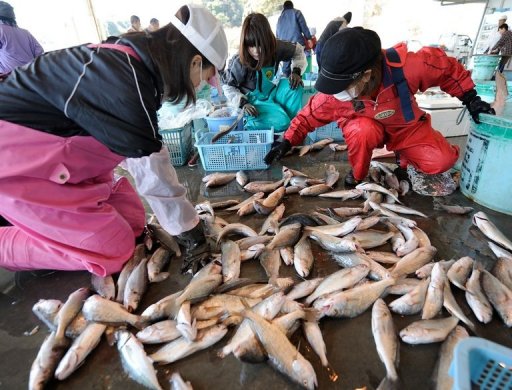Elevated levels of cesium found in fish off Japan’s east coast 18 months after the Fukushima nuclear disaster suggest a “continuing source” of radiation in the ocean, a new study revealed on Thursday.
Marine chemist Ken Buesseler of the Woods Hole Oceanographic Institution reviewed official Japanese data on radiation levels in fish, shellfish and seaweed collected near the crippled nuclear plant.
Buesseler concluded the lingering contamination may be due to low-level leaks from the facility or contaminated sediment on the ocean floor, according to his research, published Thursday in the US magazine Science.
He estimated that about 40 percent of fish caught near Fukushima are considered unfit for consumption under Japanese regulations.
A huge tsunami, sparked by a massive undersea earthquake, swamped the Fukushima Daiichi nuclear plant in March 2011.
Reactors went into meltdown, spewing radiation over a large swathe of Japan’s agriculture-heavy northeast, in the planet’s worst atomic disaster for a generation. Around 19,000 people were killed or remain missing.
Cesium levels vary across fish types, though Buesseler also found that demersal, or bottom-dwelling fish, consistently showed the highest cesium counts from the damaged nuclear plant.
The scientist also stressed that the vast majority of fish caught off Japan’s northeastern coast remain below limits for seafood consumption, which the Japanese government tightened in April this year.
Buesseler and Mitsuo Uematsu of the University of Tokyo are organizing a scientific symposium in Tokyo on November 12 and 13 to present the latest findings on how the nuclear disaster has affected the ocean and marine life.

COMMENTS
Please let us know if you're having issues with commenting.